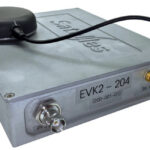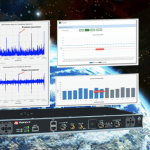Because GPS and other GNSS are critical to the nation’s infrastructure, the U.S. Department of Homeland Security (DHS) is testing an augmentation system and developing new requirements to protect it, a DHS official told the U.S. Department of Transportations’s Civil GPS Service Interface Committee (CGSIC) meeting this week in Portland, Oregon.
Because GPS and other GNSS are critical to the nation’s infrastructure, the U.S. Department of Homeland Security (DHS) is testing an augmentation system and developing new requirements to protect it, a DHS official told the U.S. Department of Transportations’s Civil GPS Service Interface Committee (CGSIC) meeting this week in Portland, Oregon.
Timing is the most critical part of positioning, navigation, and timing (PNT) for critical infrastructure operations, and GPS is over-relied upon for that information, which makes those infrastructures vulnerable, said John Dragseth, DHS National Protection and Programs Directorate, office of infrastructure protection director.
“GPS is only used in monitoring, not controlling, especially for critical timing. We think short-term [GPS] disruptions will mean short-term local impacts, which are a problem,” Dragseth said. “It also allows us to focus locally, not on a national level. We are aware of the PNT risks. [Infrastructure managers] are updating equipment, replacing antennas, and looking for direction from us at DHS.”
Among the critical infrastructure that Dragseth said are the most important: petroleum industry power grids, industrial control, financial markets, and telecom. He placed these higher than even shipping/maritime and air traffic control.
Dragseth said his agency is trying, through education and outreach, to inform all of the stakeholders who operate critical infrastructure. “We strive to create a business case for security and resilience. Over the past year, we are educating our partners on PNT issues, which has been a priority,” he said. “One thing we don’t advertise is that we have 100 senior leaders in the field at the facility level to conduct assessments, training, and how to improve their facility’s protection.”
In terms of augmenting PNT to protect critical infrastructure, Dragseth said that a cooperative research and development agreement (CRADA) has been extended to test enhanced Loran (eLoran). The agency co-signed the agreement with the Coast Guard, S&T, Harris Corporation, and UrsaNav last year. <
In April, eLORAN was tested at the New York Stock Exchange to prove the system was suited for more than just maritime operation, Dragseth said.
A PNT Broad Agency Agreement (BAA) expands DHS’s work related to GPS vulnerabilities to improve resilience, he said. “We want to develop best practices and materials for the first responder community. We also want direct engagement with the PNT community, through the CRADA, and expanded research and development through the BAA,” he said. “This includes system vulnerability testing and a requirements study for critical infrastructure.”
Because so many agencies are involved and because of the decentralized nature of critical infrastructure, it hasn’t been easy to come up with a plan to protect it, Dragseth said.
“Because of the complexity of operations, such as electricity transmission, which is different than agriculture or transportation, we have had to find a medium to find consistency across all sectors on an individual basis,” he said. “But right now, we are focused on the level of precision, rather than geographic issues. It is challenging for us to define what is critical infrastructure — and what isn’t. We work with sector communities to figure out what the key nodes are.”
Dragseth said DHS has seen a rapid expansion of how GPS and PNT are used every year. “It’s hard to conduct a formal risk assessment when we are seeing consistent change,” he said. “We are educating the owner-operators as to the risks and vulnerabilities to help them understand what mitigation and management strategies are to be used. These means purchasing new antennas to even new deployment strategies.”
One of the main roles of DHS’ Border Patrol and Customs personnel has been to prevent the entry of jammers into the country, Dragseth said.
While possession of jammers is not illegal, the purchase and use of the devices is, said Harold Martin, National Coordination Office for Space-Based PNT director. “The FCC has all authority for spectrum matters and enforcement,” he said. “With GNSS [now available], the radio navigation signal is more important than it was 20 years ago.”






